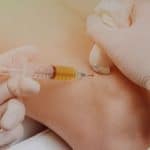Inflammation is a key focus in regenerative medicine, since the goal is to repair injured tissue. Inflammation is often thought of as an unwanted process, and there is so much focus on reducing inflammation with anti-inflammatory medications and steroids, that we forget this is a normal, and necessary step in our body’s healing or recovery process. While instances of excess inflammation may require such medications, it is important to understand what inflammation is, and how it’s important in recovering from musculoskeletal injuries.
Image credit: woundeducators.com/phases-of-wound-healing/
Localized inflammation is typically characterized by pain, swelling, redness, and heat. In response to injury, damaged cells release chemicals that cause these characteristic symptoms. The role of inflammation is to initiate a healing response. Pain makes us aware of an injury, to limit or modify movement and avoid further damage. Swelling, redness, and heat are the result of increased blood flow, which helps brings immune cells and nutrients to the area. But it is important to understand that the healing process is a chain of events. Each stage initiates, or stimulates, the subsequent stages; blocking or suppressing one stage can limit or suppress the following stages.
Acute and Chronic Injury
For the purposes of understanding inflammation, especially as related to pain, it is important to differentiate between acute and chronic injury. We typically refer to an acute injury as one that has recently happened, and is in the expected timeframe of recovery. While this varies somewhat between tissue types, like a strain vs fracture, a typical timeframe for recovery from soft tissue (muscle, tendon, ligament, fascia) injuries is 6-8 weeks. Strengthening of tissues continues for months after this, but symptom resolution is often at least 80% complete within that timeframe and suggests a “normal” healing response. In contrast, chronic injuries are those that persist beyond the typical or expected recovery period, i.e. ongoing elbow pain for 1 year. In these cases, there is often overuse and/or abnormal movement patterns (like playing tennis 4x/wk without proper conditioning, in the above example) that cause ongoing irritation without ample time for recovery. Inflammation is constantly triggered, but a normal healing process is not allowed to fully carry out, resulting in ongoing pain and degeneration of tissues, without repair. Again, there are many reasons for this, and vary on a case by case basis.
Intractable or Overused?
Another distinction I like to make regarding inflammation when deciding on if/when to use regenerative therapies is the difference between true excessive, out of control inflammation and chronic overuse. Aside from pain, the main “con” of inflammation is when it persists, which ultimately causes ongoing tissue destruction. In cases where inflammation seems excessive and out of control, such as a bursitis or a very swollen joint, the area may need to be calmed down with a small dose of steroid or other medication. This is in contrast to an overuse injury where there is not really swelling, but chronic irritation causing degeneration and destruction of tissues. In these latter cases, regenerative therapies along with activity modification and/or physical therapy can be extremely beneficial.
Assisting Inflammatory Response
It stands to reason then, that following an acute injury, or when dealing with a chronic injury, one would want to avoid suppressing inflammation. Regular use of NSAIDs (ibuprofen, aspirin, naproxen, etc) should be avoided, or at least reserved for temporary or intermittent use for pain that disrupts a certain tolerance of normal life activities. We know that chronic anti-inflammatory medication or steroid use can actually delay healing, as well as promote further degeneration of tissues (1,2,3,4,5)*.
In summary, if you are dealing with an acute injury, get supportive therapies and if needed, guidance from a professional to monitor signs of expected vs abnormal recovery. Avoid things that overly restrict or suppress inflammation, especially within the first week of the injury. For chronic injuries, consider regenerative therapies that focus on re-stimulating the healing response, which relies in part on a normal, essential inflammatory response!
- Chan KM, Fu SC. Anti-inflammatory management for tendon injuries – friends or foes?. Sports Med Arthrosc Rehabil Ther Technol. 2009;1(1):23. Published 2009 Oct 13. doi:10.1186/1758-2555-1-23
- Riley G. Tedinopathy—from basic science to treatment. Nat Clin Pract Rheumatol. 2008;4:82-89.
- Elder CL, Dahners LE, Weinhold PS. A cyclooxygenase-2 inhibitor impairs ligament healing in the rat. Am J Sports Med. 2001;29:801-805.
- Giannoudis PV, MacDonald DA, Matthews SJ, et al. Nonunion of femoral diaphysis: the influence of reaming and non-steroidal anti-inflammatory drugs. J Bone Joint Surg. 2000;82B:655-658.
- Martin P, Leibovich SJ. Inflammatory cells during wound repair: the good, the bad and the ugly. Trends Cell Biol. 2005;15:599–607.
* Some examples. Not a comprehensive list.






